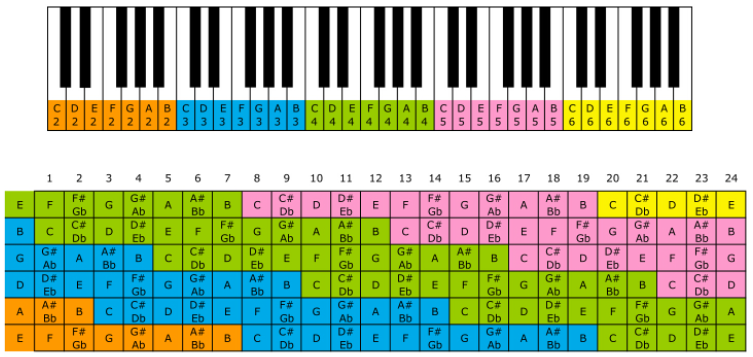I'm trying to teach myself the theme song for the Netflix original show, Hilda:
With that, I used Chordify to confirm and deny my suspicions for the chords involved:
Additionally, I browsed for some resources and found a video demonstrating a "piano cover" of the song:
While this follows the chord progression Chordify gave, and also supplies me with the individual notes for the melody (hooray for less guess work), it contains additional notes in the chords and the octave range seems too wide. For example, the first chord presented is an A minor chord:
A2 E3 A3 A5 C6 E6
However, not only does it contain an extra A note, the higher notes are two octaves higher than a natural A minor on the guitar which, from my understanding has a range of A2 to E4:
A2 E3 A3 C4 E4
As demonstrated by this mapping:
Are the higher octave notes presented with the chords in the "piano cover" required to accurately cover Hilda's theme song on guitar?


